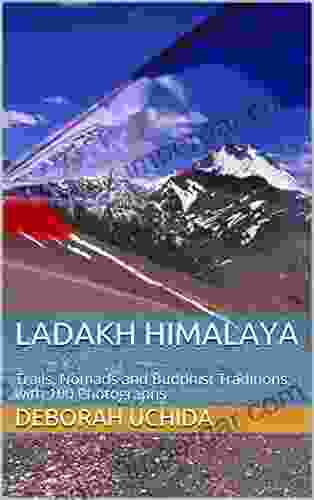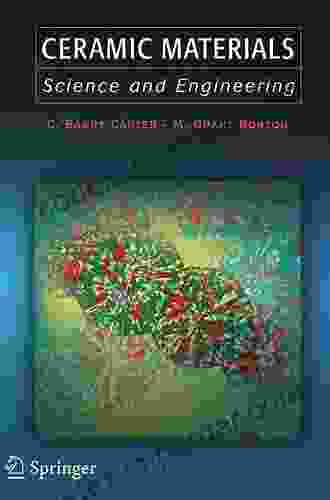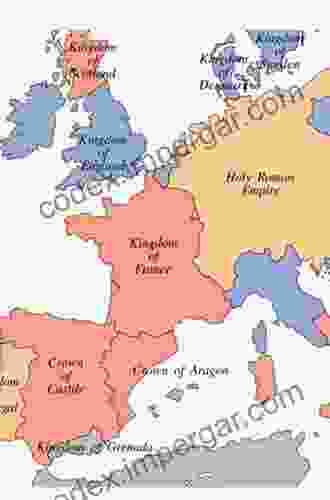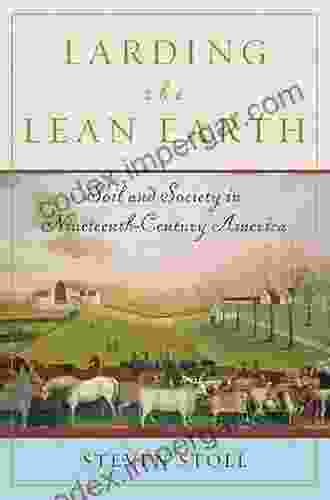Ceramic Materials Science and Engineering: The Ultimate Guide to Advanced Ceramic Materials

4.6 out of 5
| Language | : | English |
| File size | : | 60684 KB |
| Text-to-Speech | : | Enabled |
| Screen Reader | : | Supported |
| Enhanced typesetting | : | Enabled |
| Word Wise | : | Enabled |
| Print length | : | 2382 pages |
Ceramic materials are a class of inorganic, non-metallic materials that are composed of one or more metal atoms bonded to one or more non-metal atoms. Ceramics are typically hard, brittle, and heat-resistant. They are also resistant to corrosion and wear.
Ceramics are used in a wide variety of applications, including:
- Structural components in aircraft, automobiles, and spacecraft
- Electrical insulators in electronic devices
- Thermal barriers in furnaces and kilns
- Abrasives in grinding wheels and cutting tools
- Biomedical implants
Fundamental Properties of Ceramic Materials
The fundamental properties of ceramic materials are determined by their atomic structure and bonding. Ceramics typically have a crystalline structure, in which the atoms are arranged in a regular, repeating pattern. The type of crystal structure affects the properties of the ceramic, such as its strength, hardness, and thermal conductivity.
The bonding in ceramics is typically ionic or covalent. Ionic bonding occurs when one atom transfers an electron to another atom. Covalent bonding occurs when two atoms share electrons.
Applications of Ceramic Materials
Ceramic materials are used in a wide variety of applications, due to their unique properties. Some of the most common applications include:
- Structural components: Ceramics are used in structural components in aircraft, automobiles, and spacecraft. They are lightweight and strong, and can withstand high temperatures and pressures.
- Electrical insulators: Ceramics are used as electrical insulators in electronic devices. They are non-conductive, and can prevent the flow of electricity.
- Thermal barriers: Ceramics are used as thermal barriers in furnaces and kilns. They can withstand high temperatures, and can protect the underlying materials from heat damage.
- Abrasives: Ceramics are used in abrasives in grinding wheels and cutting tools. They are hard and durable, and can be used to remove material from other materials.
- Biomedical implants: Ceramics are used in biomedical implants. They are biocompatible, and can be used to replace damaged or diseased tissue.
Fabrication of Ceramic Materials
Ceramic materials can be fabricated using a variety of techniques, including:
- Powder processing: Powder processing is a method of fabricating ceramic materials by starting with a powder of the desired composition. The powder is then processed to create a homogeneous mixture, which is then formed into the desired shape. The formed shape is then heated to a high temperature to sinter it.
- Slip casting: Slip casting is a method of fabricating ceramic materials by starting with a slurry of the desired composition. The slurry is then poured into a mold and allowed to set. The set mold is then heated to a high temperature to sinter it.
- Extrusion: Extrusion is a method of fabricating ceramic materials by forcing a paste of the desired composition through a die. The extruded shape is then heated to a high temperature to sinter it.
Ceramic materials are a versatile and important class of materials with a wide range of applications. The field of ceramic materials science and engineering is constantly evolving, with new discoveries being made all the time. This guide provides a comprehensive overview of the fundamental properties, applications, and fabrication techniques of ceramic materials.
4.6 out of 5
| Language | : | English |
| File size | : | 60684 KB |
| Text-to-Speech | : | Enabled |
| Screen Reader | : | Supported |
| Enhanced typesetting | : | Enabled |
| Word Wise | : | Enabled |
| Print length | : | 2382 pages |
Do you want to contribute by writing guest posts on this blog?
Please contact us and send us a resume of previous articles that you have written.
 Book
Book Novel
Novel Page
Page Chapter
Chapter Text
Text Story
Story Genre
Genre Reader
Reader Library
Library Paperback
Paperback E-book
E-book Magazine
Magazine Newspaper
Newspaper Paragraph
Paragraph Sentence
Sentence Bookmark
Bookmark Shelf
Shelf Glossary
Glossary Bibliography
Bibliography Foreword
Foreword Preface
Preface Synopsis
Synopsis Annotation
Annotation Footnote
Footnote Manuscript
Manuscript Scroll
Scroll Codex
Codex Tome
Tome Bestseller
Bestseller Classics
Classics Library card
Library card Narrative
Narrative Biography
Biography Autobiography
Autobiography Memoir
Memoir Reference
Reference Encyclopedia
Encyclopedia Brian Hogan
Brian Hogan Bronwyn Davies
Bronwyn Davies Bradley Benton
Bradley Benton Bob Rich
Bob Rich Robert N Trigiano
Robert N Trigiano Bodie E Douglas
Bodie E Douglas Bull Garlington
Bull Garlington David Hu
David Hu Sherry Guarneri
Sherry Guarneri Bryan Sykes
Bryan Sykes Fred Schaaf
Fred Schaaf Ian D Suttie
Ian D Suttie James Stripes
James Stripes Peter Morville
Peter Morville C Mathew Mate
C Mathew Mate Jah Khyle Howard
Jah Khyle Howard C L Grant
C L Grant International Military Tribunal
International Military Tribunal Brett Myors
Brett Myors Jennifer Ackerman
Jennifer Ackerman
Light bulbAdvertise smarter! Our strategic ad space ensures maximum exposure. Reserve your spot today!

 Griffin MitchellExplore the Intertwined Journeys of Nomads and Buddhism: A Visual Odyssey...
Griffin MitchellExplore the Intertwined Journeys of Nomads and Buddhism: A Visual Odyssey... Dominic SimmonsFollow ·7.8k
Dominic SimmonsFollow ·7.8k Federico García LorcaFollow ·2.3k
Federico García LorcaFollow ·2.3k Davion PowellFollow ·10.8k
Davion PowellFollow ·10.8k E.E. CummingsFollow ·16.5k
E.E. CummingsFollow ·16.5k J.D. SalingerFollow ·18.9k
J.D. SalingerFollow ·18.9k Mikhail BulgakovFollow ·13.5k
Mikhail BulgakovFollow ·13.5k Jack LondonFollow ·10.8k
Jack LondonFollow ·10.8k Ryūnosuke AkutagawaFollow ·13.2k
Ryūnosuke AkutagawaFollow ·13.2k

 Gary Cox
Gary CoxUnlocking Meaning and Purpose in Life: An Exploration of...
In an increasingly...

 Eric Hayes
Eric HayesMemoirs of the Early Pioneer Settlers of Ohio Illustrated
A Window into the Lives of Courageous...

 J.R.R. Tolkien
J.R.R. TolkienThe Montgomerys and Their Descendants: A Saga of Courage,...
Prepare to be...

 Avery Simmons
Avery SimmonsThe Rifle Musket: The Dawn of Modern Infantry Warfare
: The rifle musket, a revolutionary...

 Jesse Bell
Jesse BellUnlock the Power of Excel with VBA and Macros: A...
Microsoft Excel is a powerful spreadsheet...
4.6 out of 5
| Language | : | English |
| File size | : | 60684 KB |
| Text-to-Speech | : | Enabled |
| Screen Reader | : | Supported |
| Enhanced typesetting | : | Enabled |
| Word Wise | : | Enabled |
| Print length | : | 2382 pages |












